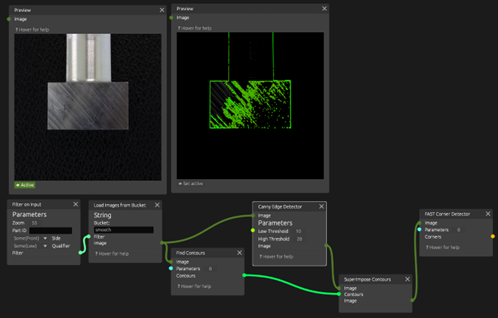
The ICNAP research sprint tested using locality sensitive hashing (LSH) algorithms for non-invasive camera-based part recognition. LSH is suitable for identifying assets due to its noise resistance and ability to match similar hash values. The study found that while LSH can work for asset identification, it's still in the proof-of-concept stage and requires significant image preprocessing to accurately identify individual assets.
| Topic Fields | |
| Published | 2023 |
| Involved Institutes | |
| Project Type | ICNAP Research/Transfer Project |
| Responsibles |
Consistently identifying individual assets offers industrial production a key advantage by providing advanced tracking capabilities. However, the question remains as to how this fingerprint can be added to assets. Typically, this requires adding an identifier (e.g., a barcode or a QR code) or an external tracker to the asset. The goal of this ICNAP research sprint was to test a new and innovative method as a non-invasive, camera-based tool for individual part recognition by using locality sensitive hashing (LSH) algorithms. LSH algorithms differ from cryptographic hashing algorithms in that, instead of small changes in the input data generating very different hash values, they tend to generate the same or a very similar hash value and are therefore resistant to noise. This means that points that are close in the input data space are also close in the hash value data space, which explains the prefix “locality sensitive”. In general, this class of algorithms is used to quickly find a duplicate image of video inside a database. Natural variations in raw materials and production processes create unique surfaces during manufacturing, which are unique to each individual asset. This can be used to identify the assets, but requires a robust algorithm that can deal with variations in lighting and camera noise. This research sprint focused on testing various LSH algorithms for this task. While we showed that LSH algorithms are generally usable for this application, their technology readiness level was lower than expected. This means that they can currently only serve as a proof of concept. We have shown that considerable image preprocessing is required to achieve high identification accuracy.
Contact us to get in touch! With a membership, you’ll gain full access to all project information and updates.
© Fraunhofer 2025